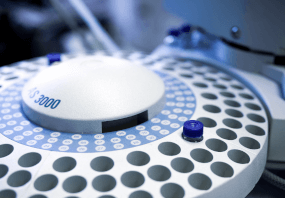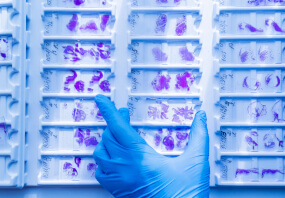Lipopolysaccharides (LPS) are complex glycolipids that contain several components. Enterobacteriaceae, such as E. coli, have highly conserved lipid A linked to the antigenic O-polysaccharide. Hydrophobic lipid A forms the outer most component that plays a role in the biological properties attributed to endotoxic LPS. A short core oligosaccharide (core OS) is found to be attached to lipid A. Enterobacteria contain an antigenic, repeat-structure O-polysaccharide (O-PS) attached to the distal core OS to form smooth LPS. O-PS in E. coli contains ∼170 distinct antigens that interact with the host immune system. Based on the core OS structures in E. coli, they have been designated K-12 and R1 to R4.Application:LPS (lipopolysaccharide) from Escherichia coli 055:B5 has been used:to stimulate human PBMC to secrete cytokine. to stimulate wild type embryonic fibroblasts and mutants for the induction of phosphorylation of p56in the measurement of tumor necrosis factor-α levels and nuclear factor-κB p65 activities after stimulationin the stimulation of hamster lymphocytes in vitroto induce activated dendritic morphology in murine macrophage cell line in a studyLipopolysaccharides (LPSs) are characteristic components of the cell wall of Gram-negative bacteria. LPS and its lipid A moiety stimulate cells of the innate immune system by the Toll-like receptor 4 (TLR4), a member of the Toll-like receptor protein family, which recognizes common pathogen-associated molecular-patterns (PAMPs).
Specification: γ-irradiated, BioReagent, for cell culture
- UPC:
- 12352200
- Condition:
- New
- Availability:
- 4-8 weeks
- Weight:
- 0.07 Ounces
- HazmatClass:
- No
- WeightUOM:
- LB
- MPN:
- L755740-1mg
- Product Size:
- 1mg












